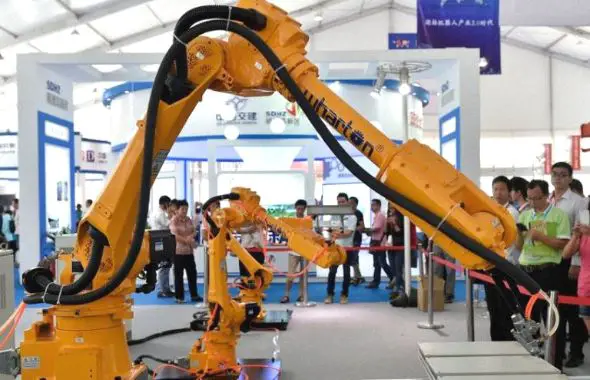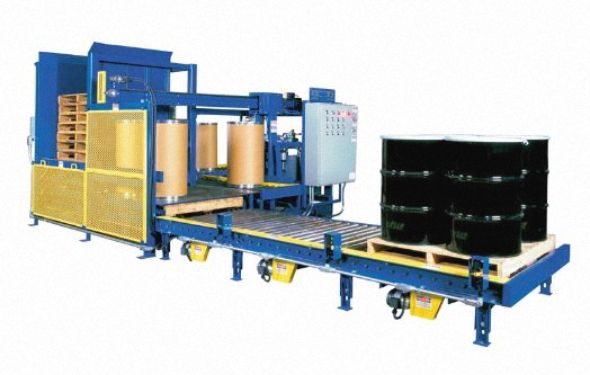There are two categories of palletizers that are presented for automating the palletizing progression in the manufacturing industry. This are robotic palletizing and conservative palletizing.

Before deciding on the technology to use, it is advisable to obviously understand your wants, your desired production rate and the amount of products you want to handle. Having this in mind confirms that a wise decision is made. Both of them have features and will guide your decision.
The criteria underneath can be used to differentiate the two technologies.
1. Robotic palletizers
Palletizing robots are well recognized for their high versatility. Being able to implement the assigned tasks autonomously by the use of a programmable logic manager is a key element of a palletizing robot. Another vital constituent is the end-of-arm-tool(gripper) which can be customized to handle the definite products.
A palletizing robot handles one or additional units simultaneously according to the configuration of the pallet. Multiple layers are made on the pallet next the products are picked from the conveyor.
Below are the landscapes of a palletizing robot.
Speed
In a minute, a palletizing robot can handle up to 40 bags. However, the products being handled greatly affects the speed of the robot.
Versatility
The versatility of a palletizing robot is contributed by the several grippers incorporated to the robot. The end-of-arm tooling can be customized to suit practically every need.
The design of these systems permits the robots to handle multiple types of containers at a time. Moreover, a palletizer robot is able to de- palletize by its vision system. It can de-palletize containers of different kind.
Maintenance
Palletizing robots have fewer mechanical mechanisms hence less frequent down time. This upsurges their reliability. Nevertheless, it is significant to train the supervisors on the proper maintenance of the robot.
Space
Greatest palletizing robots are compact hence can be installed in tight spaces and still adhere to the latest security standards that have remained put in place by the relevant authorities.
2. Conventional palletizers
Conventional palletizers can be divided into; stumpy level palletizers and high level palletizers. Products carried by conveyors are handled by low level palletizers.

A high level palletizer also handles products conceded by a conveyor. However, rather than lowering or raising each finished layer to be released onto a pallet, the products layers continue still while the pallets are being lowered or raised.
Usually, the high level palletizers are generally selected to palletize compressible products because, on all the faces, each layer is compressed. They similarly offer higher palletizing speeds.
Below are the features of conventional palletizers
Speed
The speed of conventional palletizers can vary among 10 to 40 bags in a minute. This depend on its model. Nevertheless, the speed can significantly growth depending on the nature of units being palletized.
Versatility
Compared to the palletizing robots, conservative robots have been designed to palletize one item at a time. However, each layer of the pallet is compressed and squared, thereby producing perfect and very compact pallets.
Maintenance
A conventional palletizer needs additional maintenance than a palletizing robot due to its amplified number of mechanical components. Nevertheless, its maintenance does not request highly specialized knowledge.
Space
Conventional palletizers are typically huge hence requires a larger space compared to the space being utilized by a palletizing robot. The space is not single considered in terms of floor space but also with regard to height.
Benefits of a palletizing robot over conventional palletizers
· Allows for proper utilization of the floor space since they occupy less space during the complete operation.
· Are versatile, hence can accommodate the several pallet patterns and products ranges. This includes bags, bottles, plastic containers, cases and cubes of scrap metal.
· Palletizing robots can multi-task during the production progression. In addition to palletizing, the robot can be used for case-packing, pallet loading and additional potential tasks.
· The end -of –arm- tool of the palletizing robot is completely automated and can be customized for specific products.
· Palletizing robots can similarly handle heavy loads.
